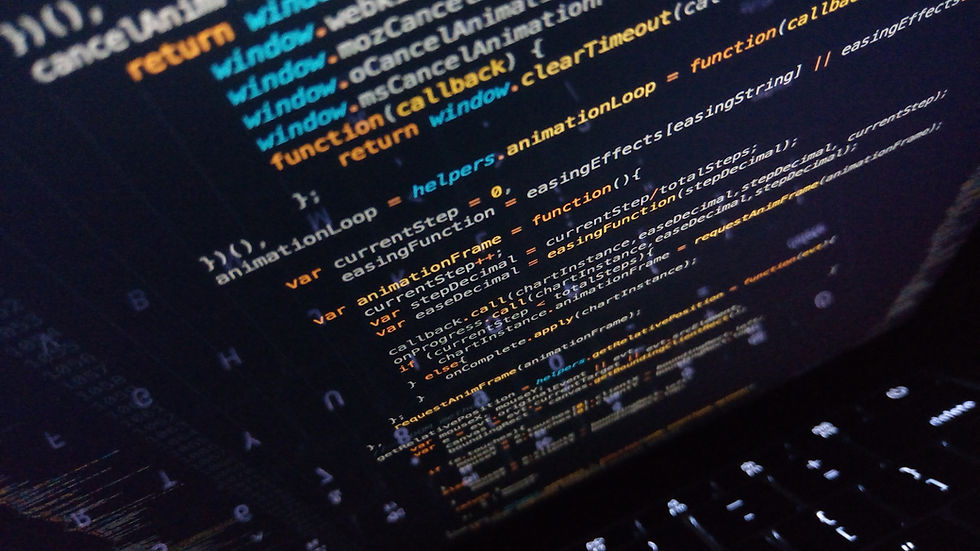The Future of Academic Honesty: Website Plagiarism Tools for University Instructors
- Codequiry

- Mar 20
- 3 min read
Academic integrity is the backbone of university education, especially in fields like computer science where originality in coding is key. With the rise of online resources, students can easily access code snippets, making plagiarism harder to spot—until now. AI-powered website plagiarism checkers, like Codequiry, are transforming how instructors ensure honesty, offering advanced detection and practical applications. Tools like these not only catch copied code but also enhance grading, provide student feedback, and shape better curricula. Let’s dive into how instructors can harness this tech to uphold academic standards.

Streamlining Grading with AI-Powered Detection
Grading coding assignments is a slog—doubly so when you’re hunting for plagiarism. A website plagiarism checker powered by AI changes that. Start by uploading all student submissions at once—most tools handle bulk uploads effortlessly. Within minutes, you’ll get a report flagging suspicious similarities. The efficiency in handling large volumes of code is unmatched; what once took hours now takes a fraction of the time.
Here’s a tip: run checks weekly after deadlines. Review the results, focusing on high-similarity scores first. Codequiry leverages advanced AI algorithms to analyze code structure, syntax, and semantics, detecting subtle plagiarism that simple string matching often overlooks. Adjust settings to catch nuanced copying, like restructured loops or renamed variables, ensuring your grading stays thorough yet swift.
Turning Detection into Feedback
Detecting plagiarism isn’t just about enforcement—it’s a chance to teach. An AI Code Plagiarism Checker like Codequiry doesn’t just flag similarities; it provides detailed, AI-driven analysis that helps students understand where they went wrong. If a student’s AI-generated code closely resembles an existing source, highlight it and guide them toward original problem-solving techniques.
Encourage revisions by suggesting alternative approaches and reinforcing proper citation practices. Attaching similarity reports fosters transparency and learning, turning mistakes into opportunities for growth. With Codequiry’s AI Code Plagiarism Checker, instructors can promote academic integrity while helping students refine their coding skills.
Building a Culture of Honesty
Academic honesty thrives when expectations are clear. Introduce your website plagiarism checker in class: “We use AI to keep things fair—focus on your work.” Show a demo, highlighting how Codequiry spots copied code, even cleverly disguised attempts. This transparency sets the tone.
Reward creativity—call out a student’s unique solution in class (with permission). Host a short session comparing acceptable use (like standard libraries) versus plagiarism (like pasting full solutions). With AI’s ability to detect subtle plagiarism, students see there’s no shortcut, nudging them toward integrity as a habit, not a rule.
Shaping Curricula with AI Insights
AI doesn’t just catch cheaters—it reveals patterns. Over a semester, a website plagiarism checker like Codequiry can show where students struggle or copy most. Are they pulling from the same tutorial site? Over-relying on peers? The difference between simple string matching and AI-based semantic analysis shines here—Codequiry digs into meaning, not just text, uncovering deeper trends.
Use this to refine your course. If sorting algorithms keep getting copied, add a lab where students build one from scratch. If recursion trips them up, tweak lectures to fill that gap. These insights let you adapt proactively, making your curriculum stronger and reducing plagiarism’s appeal.
Talking to Students About Plagiarism
When plagiarism pops up, handle it constructively. For a small overlap: “Hey [Student], this chunk looks 70% like a classmate’s—walk me through your process. Let’s fix it together.” For blatant copying: “Hi [Student], your code’s nearly identical to an online source. This breaks our rules—let’s meet tomorrow to sort it out.” Keep it calm, factual, and solution-focused.
Back to your talk about the AI report—its precision, thanks to semantic analysis, leaves little room for debate. Follow your university’s policy, but aim to teach, not just penalize. Most students want to learn; they just need a nudge.

AI vs. the Old Guard: Why Codequiry Surpasses Moss Stanford
Not all tools are created equal. Moss Stanford, a classic in code plagiarism detection, compares submissions within a group but lacks robust web checks. Modern AI website plagiarism checkers, like Codequiry, leap ahead, blending peer analysis with scans of billions of online sources. The difference? Simple string matching spots exact duplicates; Codequiry blends traditional peer analysis with AI-based semantic analysis, ensuring accurate detection of both exact matches and paraphrased code. For instructors, this means less guesswork and more accuracy.
Why Codequiry is the Future of Academic Integrity
Codequiry goes beyond traditional plagiarism detection by combining Moss Stanford strengths with cutting-edge AI analysis. It scans for similarities across diverse sources, including online code repositories and academic submissions, ensuring unmatched accuracy. By choosing Codequiry, instructors gain powerful insights to refine teaching, prevent unethical practices, and maintain academic integrity with ease.



Comments